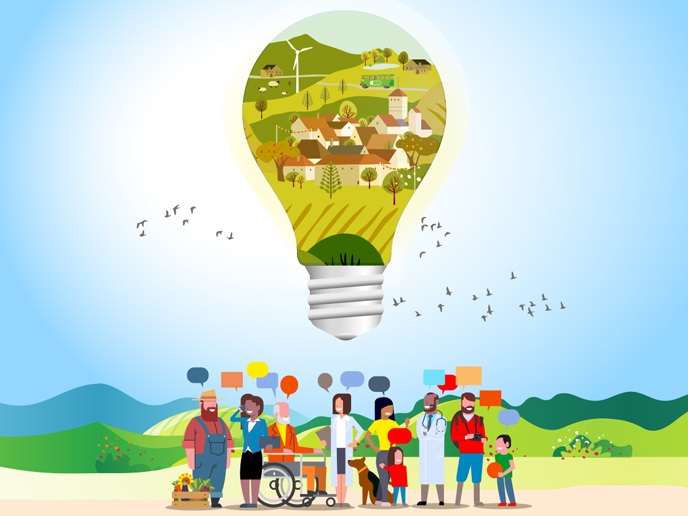Rural innovation: Developing real solutions for smart and resilient rural areas in Europe
Whilst all too often the cities and other urban areas are touted as the bastions of innovation with rural areas being consigned to the background, this is in fact far from the truth. Rural innovation potential is actually high and powered by a strong natural resource base and community spirit, a smart utilisation of tacit knowledge and the use of cooperation and social innovation to overcome barriers, such as weaker infrastructures and services. Rural areas have a crucial role to play in ensuring the stewardship of natural resources, as well as mitigating the effects of climate change, all ultimately enabling the transition to a truly green and sustainable Europe. For rural people to play their part, rural communities need to be smart, resilient and attractive places to live, work and visit.
The challenges faced by rural areas
Rural areas in many European countries have experienced a population drain in recent decades as young people flock to the cities for education, employment and cultural opportunities. Consequently, for those who choose to remain in rural areas, they often have to deal with fewer economic opportunities, lower incomes, threadbare basic services and a digital gap that tends to increase inequalities. COVID-19 has also shed new light on the vulnerabilities and interdependencies of both rural and urban communities, with many reports of city dwellers returning to rural regions with increased appreciation for more space and fresher environments. Meanwhile, rural communities have consistently helped throughout the crisis by maintaining a supply of essential goods and services, such as food and local recreational spaces, to all citizens. Rural areas have also faced major difficulties, including fewer possibilities for teleworking, poor online connections that hinder the homeschooling of children and even more pressure on their already stretched basic services, including healthcare provision. Whilst rural areas could indeed benefit from a counter-migration and more local food and tourism, whether this will be a sustained trend is hard to predict and in itself would not be enough to ensure rural areas achieve their true potential.
An EU emphasis on rural innovation
This is where the European Commission’s plan for the development of a long-term vision for rural areas (EU rural vision) comes into play, officially proposed in July 2019 (as part of the Commission’s key upcoming priorities) with its consultation process launched in summer 2020. This aims to mobilise policymakers, rural actors and citizens more broadly to encourage their participation in a dialogue on the future of Europe’s rural areas and the place they have in our society. The end goal will be to provide a holistic vision up to 2040 that will allow for the development and implementation of innovative, inclusive and sustainable solutions tailored to rural regions in light of the climate crisis, the ongoing digital transformation and recovery from the COVID-19 pandemic.
The important role of EU-funded research
Many EU-funded projects under the Horizon 2020 programme have already been applying their skills and expertise to address the issues faced by rural areas outlined above and enhance their potential to seize opportunities and contribute to Europe’s future. It also goes without saying that more projects will follow in their footsteps due to the launch of the next EU research and innovation programme, Horizon Europe. Together, all of their results will contribute to fulfilling the ambitions to be laid out in the Commission’s EU rural vision. For example, the LIVERUR project has created a comprehensive toolbox to help rural businesses design sustainable and innovative business models that contribute to a more circular economy and are adapted to their particular circumstances, as well as providing an online platform for them to more easily engage with each other. Then we have the RUBIZMO project that has worked to nurture rural pioneers in three distinct sectors (food, bio-based value chains and ecosystem services), thus providing positive role models to lead by example and encourage the further growth of rural regions. Meanwhile, the SIMRA project has placed a firm emphasis on social innovation as a means to revitalise struggling rural areas, whilst ROBUST has been designing pathways to enhance synergies in the governance of urban and rural communities, and SALSA undertook a detailed study of small farms and food businesses, with all projects aiming to provide detailed evidence-based recommendations to boost Europe’s rural economies and well-being. Finally, this Pack also introduces you to two much more recent projects that are still to fully mature: the IMAJINE project that aims to formulate new integrative policy mechanisms to address territorial inequalities within the EU and the NEWBIE project that will foster cutting-edge business models for new entrants into farming to encourage innovation, resilience and entrepreneurship in European agriculture.

